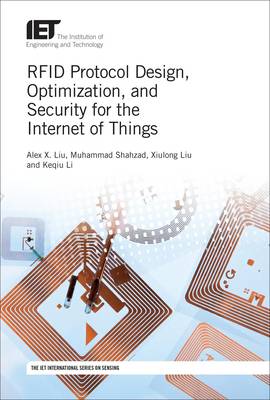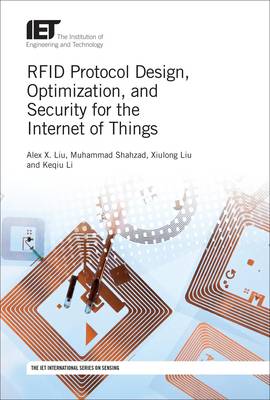
- Retrait gratuit dans votre magasin Club
- 7.000.000 titres dans notre catalogue
- Payer en toute sécurité
- Toujours un magasin près de chez vous
- Retrait gratuit dans votre magasin Club
- 7.000.0000 titres dans notre catalogue
- Payer en toute sécurité
- Toujours un magasin près de chez vous
Rfid Protocol Design, Optimization, and Security for the Internet of Things
Alex X Liu, Muhammad Shahzad, Xiulong Liu, Keqiu LiDescription
Radio-frequency identification (RFID) uses electromagnetic fields to automatically identify and track tags attached to objects. The tags contain electronically stored information. RFIDs have been widely used in countless applications such as object tracking, 3D positioning, indoor localization, supply chain management, automotive, inventory control, anti-theft, anti-counterfeit, and access control. The Internet of Things (IoT) promises a huge growth in RFID technology and usage.
This book covers the topic of RFID protocol design, optimization, and security. RFID systems allow for a much easier and error free inventory management and tracking, but the probabilistic nature of RFID protocols makes the design and optimization complex and challenging. Most existing commercial RFID systems are not well designed. In this book, the authors aim to demystify complicated RFID protocols and explain in depth the principles, techniques, and practices in designing and optimizing them.
Spécifications
Parties prenantes
- Auteur(s) :
- Editeur:
Contenu
- Nombre de pages :
- 272
- Langue:
- Anglais
- Collection :
Caractéristiques
- EAN:
- 9781785613326
- Date de parution :
- 20-11-17
- Format:
- Livre relié
- Format numérique:
- Genaaid
- Dimensions :
- 163 mm x 241 mm
- Poids :
- 544 g

Les avis
Nous publions uniquement les avis qui respectent les conditions requises. Consultez nos conditions pour les avis.






